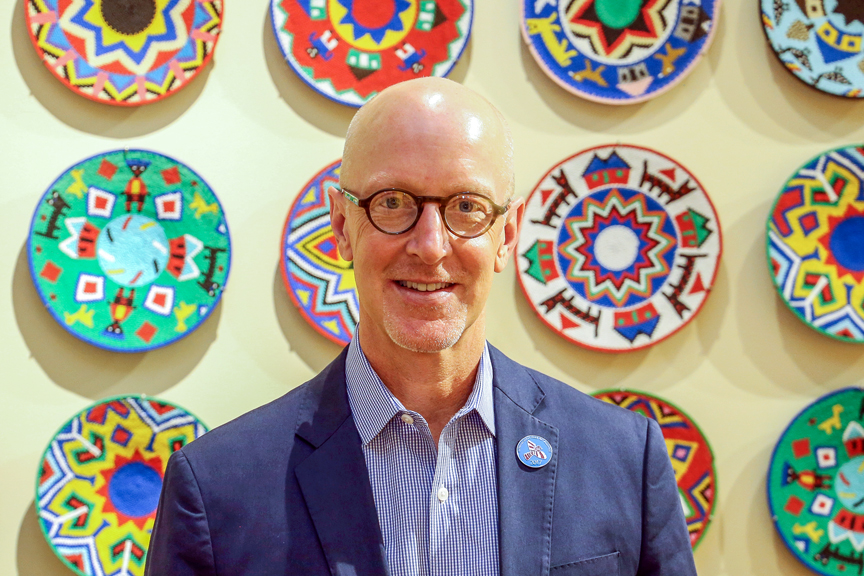1. What is your name?
Jeff Snell
2. What is your occupation?
CEO, International Folk Art Alliance (IFAA)
3. What was your favorite green memory growing up?
When my mom, explained to me that we’d no longer be using aerosol sprays because it harmed the ozone. I asked, “What’s an ozone?” and a whole new understanding opened up to me.
4. What did you do before your CEO role at IFAA?
Advisor to the President at a university in the Midwest and COO at a private billion-dollar foundation.
5. Why do you believe it’s important for people to attend the International Folk Art Market this summer?
The Market is a unique exchange of cultural riches that has resulted in readers of USA Today voting it the #1 arts festival in the country. So the reasons for attending are widespread (one attendee commented it was the most joyous experience of his life . . . including his wedding!). But I believe it’s important because the experience allows us to better understand our shared journey with members of the human family all over the world. And frankly, we get see the world at its best!
6. What are the most rewarding and challenging parts of your job?
The most rewarding part is knowing that IFAA is co-creating with artisans new economies or scaling existing ones, and watching the positive social change that results when artists are equipped as catalysts because of their participation in our markets. That’s just joyous (and I get paid for this!).
The most challenging part right now is pivoting toward a social enterprise model whereby we can attract working capital to open new markets, creating more opportunities for more artists. If this organizational pivot were easy, someone else would’ve already figured it out, but it’s a real challenge. Fortunately, the entire organization is committed to successfully meeting this challenge in a strategic and sustainable way.
7. What is one environmental change you vow to make this year?
Driving less and biking more.
8. Can you tell us more about how supporting IFAA is helping the global economy?
According to a U.S. State Department report, the artisan sector is the second most widespread means of creating new economies. And each year at the flagship Market in Santa Fe, we strive to bring roughly one-third first-time artists to participate—this year that’s a record 52 first-time artists. Just think of the ripple effect globally as these artistic enterprises take root and begin to scale.
9. If there was one industry/product that you could make more eco-friendly, what would it be?
Mass goods transport, such as big rig diesel trucks.
10. What’s next for The International Folk Art Alliance?
Open more markets! Also, we have a new world headquarters coming on line this fall—a very exciting step for the IFAA family as we’ll increase our operating space by 120 percent at a modest 25 percent increase in overhead—compelling math that even this CEO can understand.
11. What’s your favorite book?
Most anything written by Gladwell.
12. Where do you turn for your news?
Myriad sources, really; left and right and international. And my amazing wife of 31 years. She’s the best truth-teller I know.
13. Where on the green scale do you fall?
Aspirational
14. Do you lead a vegan lifestyle?
When I’m traveling . . . but otherwise I succumb to Santa Fe’s amazing offerings of delicious food across the dietary spectrum. But I’m working on it.
15. Who would you want to have a conversation with past or present?
Thomas Jefferson and Jesus. And Ghandi.
16. You have over 150 artists attending the market, can you recall one story in particular that touched you deeply?
Wow, there are so many. A couple come to mind. A woman from a small island off the northwest coast of Australia told me how IFAA’s purchase of her village’s handmade lanyards (for use at the Market) transformed her community. They launched a new social business as a lanyard supplier. Super cool.
And then a jeweler from Sardinia who participated in the Market for the first time. At payout, after the Market, he wept when he received his earnings check. I thought something was wrong, but he wiped his eyes, saying, “I’m so happy. I’m so happy.” Artists take home 90 percent of their earnings, so the economic empowerment is awesome and truly transformational.
17. How does IFAM positively impact the environment?
At the Market, we use a centralized guest transport system and bike program to reduce individual car use. Next year, our 15th anniversary, we have a goal of making it a green Market and are already exploring solar panels.
But globally, let’s not overlook the obvious: the artisan products are handmade, including natural dyes, hand-weaving, etc.
18. What do you want your personal legacy to be?
Creating more opportunities for more artists via replicating and scaling the market model in new cities worldwide. It took IFAA about 13 years to impact the first one million lives globally and to generate more than $25 million in artist earnings. I’m hopeful we can double those numbers in less than half the time during my tenure as CEO, but it won’t be my doing. It’ll be an amazing team with extraordinary volunteers in multiple cities (we have 2,000 such volunteers in Santa Fe). Part of my leadership will be knowing how and when to get out of the way so this artisan social entrepreneurship movement can grow exponentially.
We also have a “Green Team” of volunteers at Market that collect and recycle everything from artist packing materials to food containers at the volunteer hospitality tent. It’s a big operation and really well run.
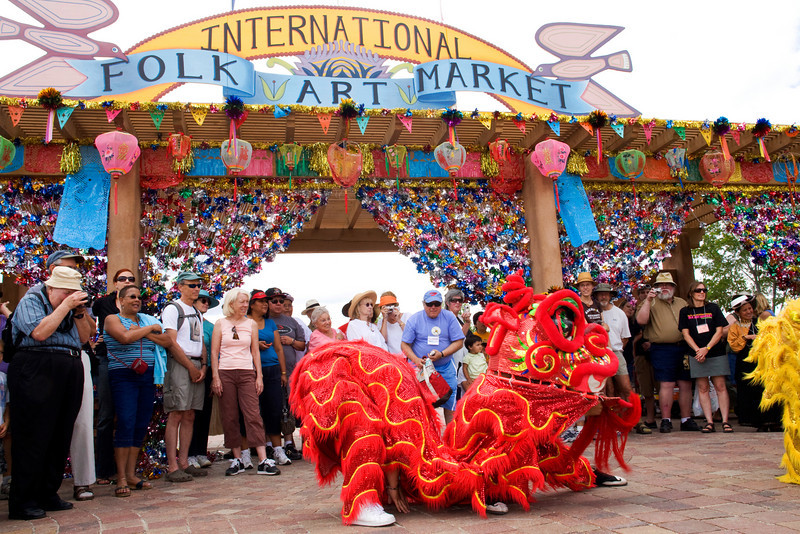
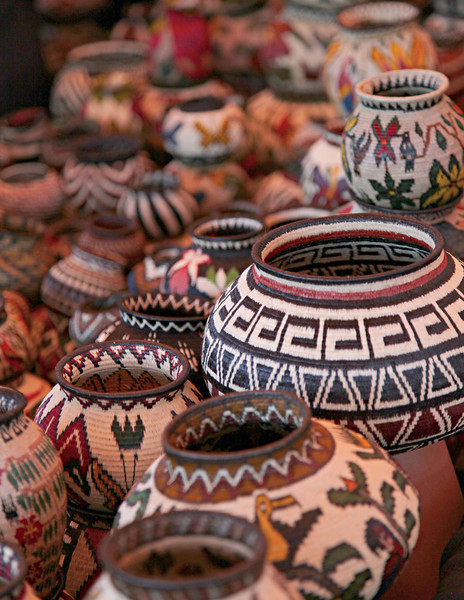
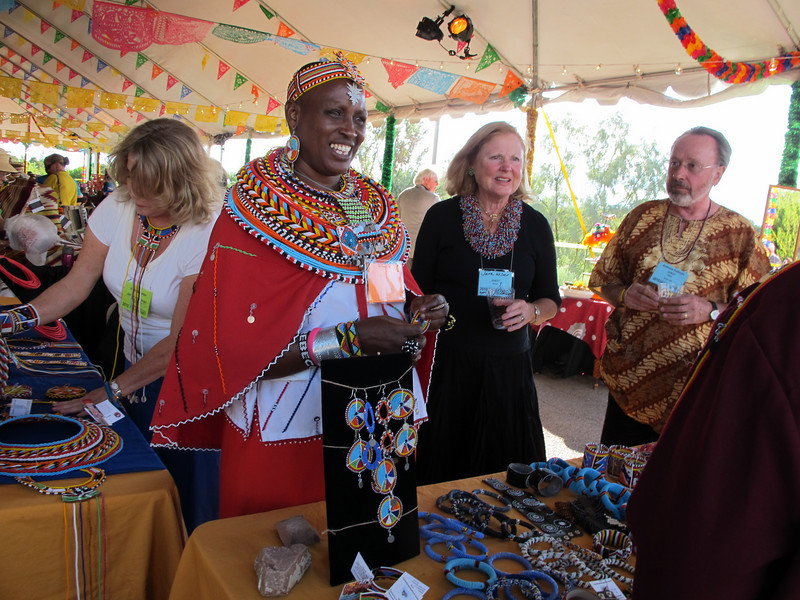
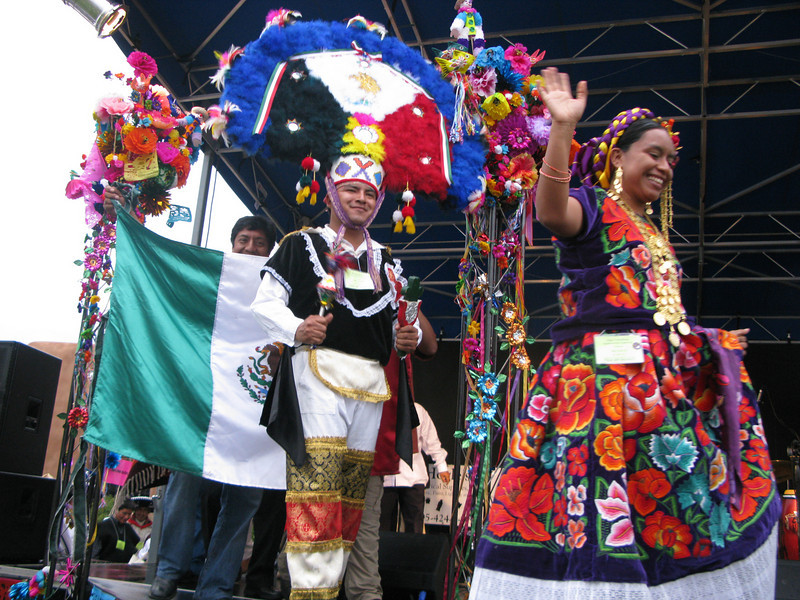
 Food
Food Farmers
Farmers Sustainable Living
Sustainable Living Living Planet
Living Planet News
News